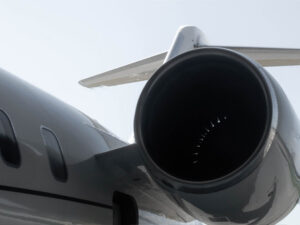27 Apr The benefits of digitalized MROs
 In recent years, digitalization has become a buzzword across many industries, and the aviation sector is no exception. With the increasing reliance on technology and the need for more efficient processes, digitalization has changed the way of working for companies in the industry.
In recent years, digitalization has become a buzzword across many industries, and the aviation sector is no exception. With the increasing reliance on technology and the need for more efficient processes, digitalization has changed the way of working for companies in the industry.
MRO companies must keep pace with these developments and optimize the use of different technologies. One such digital asset that is gaining popularity in the maintenance industry is “Corridor,” a software solution that bridges the gap between customers and MRO service providers. Using this platform, consumers can monitor the maintenance progress of their aircraft in real-time, view work reports and communicate directly with the MRO team.
Life gets easier with digital processes
One of the most significant advantages is the reduction of time spent on maintenance tasks. Digitalization enables work to be done, tracked, and released on-site without the need to print, fill out, or sign documents manually. This means that customers can expect faster and more efficient maintenance services with fewer delays and faster turnaround times. In addition to the operational benefits, these digitalization efforts can also lead to cost savings for the customer. Work steps can be reduced, resulting in less time and fewer man-hours. This means less expense, making the maintenance process more affordable and accessible.
Another advantage is the decrease in storage space required for physical documentation. Work reports, work cards, and certificates of release to service (CRS) can be stored digitally, saving space while simultaneously reducing the risk of losing important documents. In this way, the industry is also heading towards a more sustainable future. Moreover, the time factor also comes into play when the completed work reports are reviewed by the Continuing Airworthiness Management Organization (CAMO) or the operator. After all, they can be reviewed immediately without having to wait for the original paper documentation. The ground time during maintenance can also be reduced due to the simplification and digitalization of the process. Digital work reports can be filled out much quicker than conventional reports, and even planned maintenance of several weeks can be reduced to a few hours or even a day, leading to cost minimization for the customer.
Upcoming technologies: The future landscape of MRO
The growth of the aviation industry may have been slowed by the global pandemic, but that hasn’t changed the fact that aircraft require maintenance and repair. MRO providers are responsible for ensuring the safety and airworthiness of aircraft. These airplanes vary in the components that make them up – from single-shaft to geared turbofan engines and from traditional aircraft structures to innovative carbon-fiber-reinforced polymers – that’s where digitalization comes into play.
Looking into the future of the MRO industry, we can expect to see even more advanced technology being used. Artificial intelligence and machine learning algorithms will continue to become more sophisticated, allowing for even more accurate predictive maintenance and better decision-making processes. Apart from that, the use of robotics and automation will likely increase, particularly for tasks that are dangerous or difficult for humans to perform. This will improve safety and efficiency while also reducing costs. Another technology that will play a significant role in the future of MRO is blockchain. This secure and decentralized technology can be used to track the entire lifecycle of an aircraft part, from manufacturing to disposal. This will provide increased transparency and traceability, reducing the risk of counterfeiting and ensuring compliance with regulatory standards.
Digitalization: the game changer of the decade
All in all, digitalization is driving the development of new solutions and changing the MRO industry more than anything else. It is the biggest game changer of this decade. Considering the 50-fold increase in data generated by new aircraft types and the fact that about 50 percent of airlines’ operating costs are directly or indirectly related to MRO services, further cost reduction can only be achieved through MRO and operational optimization on the back of digitalization. Furthermore, using digital tools and technologies, MRO providers can streamline processes, reduce downtime, and improve turnaround times, bringing significant benefits to their customers.
As a company that keeps pace with developments, we at PRIMUS AERO are excited about the opportunities that digitalization and upcoming technologies offer to the MRO industry and our customers, and we look forward to what the future brings.



